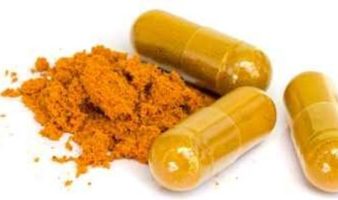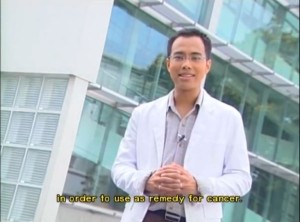

Curcuma longa linn as anti cancer cell
This entry was posted on September 19, 2018.
Curcuma longa linn as anti cancer cell
Curcuma Longa/Cúrcuma is a small perennial herb native to India bearing many rhizomes on its root system which are the source of its culinary spice known as Turmeric (Cúrcuma - rizoma secco in polvere) and its medicinal extract called Curcumin (Cúrcuma extracto refinado).
Botanical Classification by Carolus Linnaeus:
- Family: Zingiberaceae (Ginger, Zenzero, Gingembre, Jengibre, Gengibre)
- Genus: Curcuma
- Species: Longa
- Scientific Name: Curcuma Longa Linnaeus (curcuma longa l)
Distribution:
- India (especially Andhra Pradesh and Tamil Nadu): 600,000 tons annually .
- Southeast Asia
The Spice Curcuma/Turmeric
- Description: a yellow/brown powder made from the dried rhizome of Curcuma Longa. It has a slight earthy flavor and little aroma. It is known for its color and for its health-giving properties.
- Benefits of Turmeric: a Singapore study of the elderly demonstrated a positive connection between turmeric/curry consumption and cognitive function. People who ate curry often (more than once a month) or ate it occasionally (once or more in 6 months) performed significantly better in mental tests than did those who ate curry less than once a month. (American Journal of Epidemiology 11/2006.)
Use:
- in Curry powder, Curcuma is added to the mix of spices which usually consist of: coriander, cumin seeds, fenugreek seeds, chili, mustard seeds, black peppercorns and salt.
- as a tea (for example in Okinawa): turmeric can be added to hot water and then strained (with touch of ginger and lemon juice); it can also be added to milk and simmered.
Description of the Extract: Curcumin/Curcuma
Curcuma is a yellow-orange polyphenol. In its usual form it is a dry yellow powder that is oil-soluble. Curcuma is without flavor and aroma. Its strong anti-oxidant and anti-inflammatory characteristics are its most obvious medicinal properties.
Curcuma is derived from the root of the Curcuma Longa plant first by drying and powdering, to create the spice called Turmeric, then by a solvent extraction. The resulting refined powder is 18 times stronger in the essential ingredients than is the common spice.
Research on Curcuma has been focused on Alzheimer's, Arthritis, Cancer and Diabetes. In laboratory experiments on rodents, Curcuma can break up the Alzheimer's amyloid-beta polymers, suppress arthritic inflammation, induce apoptosis in some cancer types and improve insulin sensitivity. Human trials of Curcuma for some illnesses are underway.
Technical Information:
- Chemical Formula: C21H20O6; Molecular Weight: 368.38
- Metabolites: Curcumin-sulphate, Curcumin-glucuronide; Catabolites: Vanillic acid and Ferulic acid.
- Three Molecular Forms: curcumin, demethoxycurcumin and bisdemethoxycurcumin.
- Molecular structure: it is a dimer of vanillin (2 molecules of vanillin conjoined).
Medicinal Properties of Curcumin:
Curcuma Longa extract has significant effects in the laboratory on arthritis, amyloid-beta (Alzheimer's polymers), cancer and diabetes. It has the following properties:
- anti-oxidant;
- Arthritis: inhibits inflammation, possibly inhibiting something in the pathway of Cox-2 but not Cox-2 itself; not only does it not cause ulcers but is currently being used experimentally as a treatment for ulcers in western countries.
- Alzheimer's Disease: inhibits formation of, and breaks down, Amyloid-beta oligomers (entwined fibres) and aggregates (lumps) in rodents;
- blood thinning: reduces clotting and clinging together of platelets;
- Cancer: causes apoptosis (death) of various cancer cell types including skin, colon, forestomach, duodenum and ovary in the laboratory; we await clinical trials;
- inhibits viral and fungal disease;
- inhibits bacteria including Helicobacter Pylori;
- Diabetes: reduces diabetes in rodents; we await clinical trials.
- Summary: "Curcumin has been shown to exhibit antioxidant, anti-inflammatory, antiviral, antibacterial, antifungal, and anticancer activities and thus has a potential against various malignant diseases, diabetes, allergies, arthritis, Alzheimer's disease, and other chronic illnesses." - Source: Adv Exp Med Biol. 2007;595:1-75. Curcumin: the Indian solid gold. Aggarwal BB, Sundaram C, Malani N, Ichikawa H. Department of Experimental Therapeutics, The University of Texas M.D. Anderson Cancer Center, Houston, TX 77030, USA.
Traditional and Modern Uses of Curcuma Longa
- In India, Curcuma Longa has been in use as a culinary ingredient since 3000 BC. It is used as a food coloring for curry and as a preservative for food. As a medicine it is used to treat a wide variety of ailments including stomach ache, skin problems, muscular problems and arthritis. Curcuma Longa has also been used as a clothing dye and as a cosmetic. Indians are thought to consume between 80 and 200 mg per day of Curcuma Longa extract. India as a whole consumes 480,000 tons of turmeric annually.
- In China it has been used as a topical analgesic, and for colic, hepatitis, ringworm and chest pain.
- In Europe it is used in many foods as a coloring in mustard, cheese, margarine, beverages and cakes. In the recent past it has been used for dyspepsia, chronic anterior uveitis and Helicobacter pylori bacteria.
- It is generally recognized as safe by the FDA of the United States.
- Availability: in capsule form as a health supplement and as the culinary spice Turmeric.
As of October 2011 there are more than 4300 articles cited by Pubmed on the subject of Curcuma Longa products including 1604 on cancer, 66 on arthritis, 181 on alzheimer's disease and 151 on diabetes. This demonstrates that Curcuma Longa is now being used in new ways.
Synonyms for the pure extract:
- Curcumin; Turmeric Extract; curcuma longa l (English)
- Curcuma/Cúrcuma (French, Spanish, Portuguese and Italian); also Curcuminé (Fr.)
- Haldi (हल्दी North India) also Halad, Harida; Manjal (மஞ்சள Tamil) - for the natural spice.
- Kunyit (Indonesia)
- Kurkum (الكركم, Arabic)
- Jiang Huang (姜黄, Chinese)
- Ukon (ウコン Japanese)
- diferuloylmethane
- 1,7-Bis(4-hydroxy-3-methoxyphenyl)-1,6-heptadiene-3,5-dione
Source: Youtube, curcumalonga.com
Posted By The Health Cure, June 29 2014

